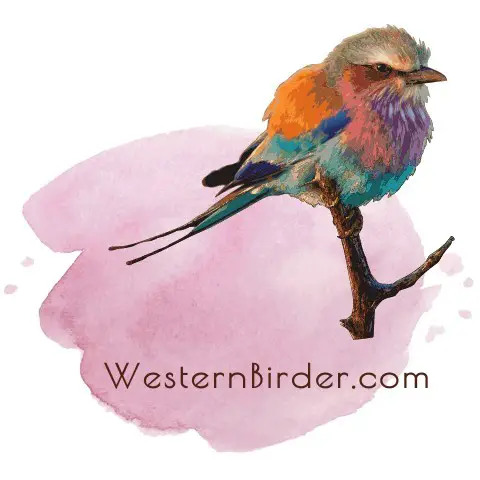Adam named all living animals in the Genesis narrative of creation, including “every bird of the air” (Genesis 2:19). That was a difficult assignment. Of course, he didn’t have to dispute over the names with anybody… Eve had not yet been conceived.
Adam must have had a good time coming up with bird names. He may name them by their colour, such as the Blue Jay, or after their physical qualities, such as the spoonbill, or after their activity, such as the woodpecker. In reality, most current bird names are derived from the characteristics of birds.
Scientific research has aided in the classification of birds into families, a process called as taxonomy. Herons, for example, belong to the “wading bird” family, whereas woodpeckers belong to the “woodpecker” family. Birds are classified into families based on common traits. Perhaps Adam grouped birdsBlue Jay in the same manner.
The endeavour to standardise bird names has been ongoing since Adam. Carl von Linné (aka Carolus Linnaeus) created a method of categorising all living things in 1758 with a two-part Latinate name that anybody in the world could understand. The Linnaeus system, commonly known as scientific nomenclature, identifies the first name as the genus (a group of plants or animals that are closely related) and the second name as the species (the specific kind of plant or animal.) Always capitalise the initial letter of the genus name. Melanerpes carolinus is the scientific name for a Red-bellied Woodpecker.
The American Ornithologists’ Union (AOU) started standardising popular American English bird names in 1957. This was a significant advancement since there were far too many regional “folk” names for birds. Texas Cardinal and Pyrrhuloxia, for example, were both names for the same bird—a southwestern relative of the cardinal. The AOU chose Pyrrhuloxia, which is more difficult to say than Texas Cardinal but describes a bird that is not exclusive to Texas. The AOU-designated American English common names, as well as the scientific Latin names, are used in modern bird publications.
Scientific bird names are important if you’re visiting non-English-speaking nations, using a field guide that isn’t published in English, or if you’re a scientist or serious bird student interested in precise classifications. However, most birdwatchers are satisfied with popular English bird names. When they see a ruby-throated hummingbird in their garden, I don’t suppose birdwatchers exclaim, “Wow, an Archilochus colubris!”
People have traditionally defined birds based on important traits, as seen by the root meanings of English bird names. Perhaps, like Adam, we have attempted to describe a bird’s unique characteristics via its name. For example, the term “woodpecker” is derived from two Anglo-Saxon words: “wudu,” which means “wood,” and “pican,” which means “to peck.” Sparrow is derived from the Anglo-Saxon word “spearwa,” which means “flutterer.” Early English colonists called the meadowlark by combining the words meadow, for the bird’s habitat, and lark, for the bird’s lovely singing, which sounded similar to the English skylark.
Onomatopoeia is the practise of naming a bird or other object after the sound it makes. As a result, the chickadee derives its name from the sound it makes, “chick-a-dee-dee-dee.” Hummingbirds are named after the buzzing sound of their wings, whereas crows are named after their “caw-caw-caw” sound. The Whip-poor-will makes the sound “whip poor Will” at night. The crane is a less apparent example of a bird whose name is derived from its call. Crane is derived from the Anglo-Saxon word “cran,” which means “to cry out.” Whooping Crane is a wonderful onomatopoeia—the bird shouts out (crane) with a resonant cry (whoop.)
Birds’ names may be derived from their appearance, like in the case of the Roseate Spoonbill, which was called for its rich pinkish hue and flattened, spatula-shaped bill. A Scissor-tailed Flycatcher is distinguished by a long, forked tail that opens and shuts like a pair of scissors. The beak of the Pied-billed Grebe is blotchy and two-toned (pied) black and white. The White-eyed Vireo (Latin for “green”) is greenish with white eyes. Titmouse is derived from the Icelandic word “tittr,” which means little, and the Anglo-Saxon word “masse,” which means small bird. The fact that masse became mouse in titmouse is most likely owing to the long legacy of misspelling.
A few birds were named after nineteenth-century naturalists. The Bachman’s Sparrow was named by John James Audubon in honour of his friend, Dr. John Bachman, a clergyman and naturalist in Charleston, South Carolina. Bachman’s Warbler was found and named by Dr. Bachman (a bird probably extinct today). The Bewick’s Wren was also named after another friend, Thomas Bewick, an English engraver who authored and illustrated a book on British birds. The Audubon’s Oriole, which lives in extreme southeast Texas, is named after you-know-who.
People often mispronounce bird names, such as referring to a vulture as a buzzard. That error comes back to English colonists who named any flying bird with wide wings a buzzard, which was the usual term for soaring hawks in England. Because there were no vultures in England, the colonists couldn’t tell the difference. But we know the difference: vultures remove dead animals off the road, but hawks do not. Vultures, by the way, are related to the majestic California Condor. Consider this the next time you scoff at a vulture.
The word “seagull” is used to describe a gull. There is no such thing as a seagull in bird nomenclature since gulls are not water birds. Gulls forage for food on the beach, in the bay, around inland lakes, and even in city parking lots, but seldom on the open sea. The term gull is derived from the Welsh word “gwylan,” which means throat or gullet. Thus the term “gullible.” A gullible individual, like a gull, will swallow practically anything.
Adam was credulous in believing the serpent’s narrative. Perhaps he should have stayed with naming birds.
Gary Clark is an Associate Dean of Natural Sciences at North Harris College in Houston, Texas, and a freelance writer. He can be reached at [email protected].
